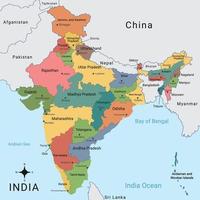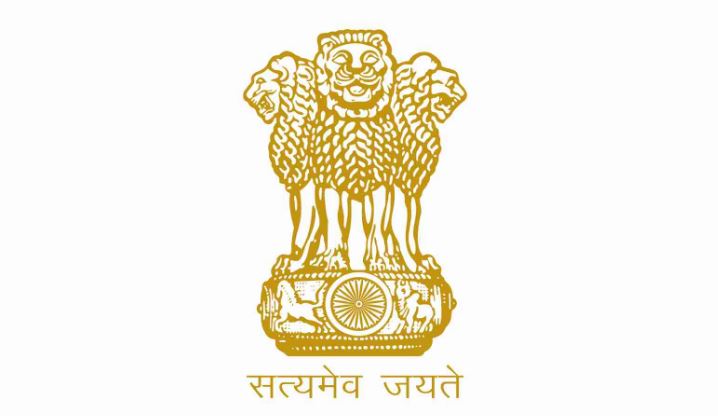Lal Bahadur Shastri
| Full Name | Lal Bahadur Shastri |
| Date of Birth | October 2, 1904 |
| Place of Birth | Mughalsarai, United Provinces, British India (now Uttar Pradesh, India) |
| Date of Death | January 11, 1966 |
| Place of Death | Tashkent, Uzbekistan |
| Spouse | Lalita Shastri |
| Children | 2 sons and 2 daughters |
| Religion | Hindu |
| Nationality | Indian |
| Famous Slogan | “Jai Jawan Jai Kisan” (Hail the soldier, Hail the farmer) |

Introduction:
Lal Bahadur Shastri was a significant figure in the history of modern India. He served as the second Prime Minister of India from 1964 until his untimely death in 1966. Shastri is remembered for his strong leadership during the Indo-Pakistan war of 1965, his promotion of the White Revolution, and his focus on self-reliance in India’s agricultural and industrial sectors. His leadership style was marked by simplicity, humility, and a commitment to social justice.
Childhood & Early Life:
- Birth and Early Life: Lal Bahadur Shastri was born on October 2, 1904, in Mughalsarai, a small town in Uttar Pradesh, India, to a poor but respectable family. His father, Sharda Prasad Srivastava, was a school teacher, but he passed away when Shastri was only a year old. Growing up without a father, Shastri’s mother, Sharada Devi, played a pivotal role in his upbringing and instilled in him values of discipline, hard work, and humility.
- Education: Shastri attended Harish Chandra High School in Varanasi, but his education was often interrupted by financial difficulties. Despite the challenges, he continued his studies and graduated from Kashi Vidyapeeth (now Banaras Hindu University) in Varanasi. It was during his youth that Shastri was inspired by Mahatma Gandhi’s call for non-violence and civil disobedience, which led him to join the Indian independence movement.
Political Career:
- Entry into Politics: Lal Bahadur Shastri’s political career began in the 1920s when he became involved in the Indian freedom struggle under the guidance of Mahatma Gandhi. He was inspired by Gandhi’s vision of a non-violent struggle for India’s independence from British rule. Shastri joined the Indian National Congress and became an active participant in the Salt March and Quit India Movement.
- Post-Independence Political Journey: After India gained independence in 1947, Shastri’s career in public service continued to flourish. He was appointed the Deputy Minister for Railways and Transport in 1951 and then became the Minister of Transport and Communications. During this time, Shastri worked on improving India’s railway systems and public transport networks, making a significant impact on India’s infrastructure.In 1956, Shastri was appointed the Minister of Home Affairs, where he worked on tackling internal security and managing communal unrest during a period of significant transition. His administrative skills and calm demeanor under pressure earned him respect across party lines.
- Prime Minister of India: Shastri became the Prime Minister of India in June 1964, after the sudden death of Jawaharlal Nehru. Despite his relatively low-profile political career compared to Nehru’s, Shastri’s ascent to the top position was welcomed for his integrity, decisiveness, and simplicity. His leadership was tested soon after when India faced a serious confrontation with Pakistan.
Major Works:
- Indo-Pakistani War of 1965: Shastri’s leadership during the Indo-Pakistani War of 1965 proved his mettle as a statesman. The war was triggered by territorial disputes over Kashmir, and Shastri’s calm, calculated response earned him widespread admiration. Despite facing limited resources and a tough military situation, Shastri managed to rally the nation’s support and lead the Indian forces to a stalemate, which eventually resulted in the Tashkent Agreement. The war ended in a ceasefire, and the agreement facilitated peace between the two countries.
- The Green Revolution: Lal Bahadur Shastri played an instrumental role in launching the Green Revolution in India. Faced with severe food shortages, Shastri pushed for the adoption of new agricultural technologies, better irrigation practices, and the introduction of high-yielding varieties of crops. These efforts aimed to make India self-sufficient in food production and reduce the dependency on foreign aid. The Green Revolution helped India become one of the world’s largest food producers.
- “Jai Jawan Jai Kisan” Slogan: One of Shastri’s most famous contributions to India’s national discourse was his slogan, “Jai Jawan Jai Kisan” (Hail the soldier, Hail the farmer). This slogan highlighted the dual importance of the military and the agricultural sector in securing the nation’s future. It became a rallying cry for national unity, reflecting Shastri’s vision of a strong, self-reliant India that prioritized both defense and agriculture.
- Promotion of the White Revolution: Shastri also supported the development of India’s dairy industry, which led to the White Revolution. Under his leadership, the government launched initiatives to improve milk production, particularly through the development of the National Dairy Development Board (NDDB). This helped India become the world’s largest milk producer, significantly improving the livelihood of farmers across the country.
Awards & Achievements:
- Bharat Ratna (1966): Lal Bahadur Shastri was posthumously awarded the Bharat Ratna, India’s highest civilian award, in recognition of his leadership and contributions to the nation. His death in 1966, while in Tashkent for peace negotiations, was a great loss to the country.
- Tashkent Agreement: Shastri’s involvement in the Tashkent Agreement in 1966 was a defining moment in his diplomatic career. The agreement, signed between India and Pakistan, helped de-escalate the conflict that had erupted in 1965. Despite facing many challenges, Shastri’s commitment to peace and diplomacy helped foster a period of temporary stability between the two nations.
Personal Life & Legacy:
- Personal Life: Shastri married Lalita Shastri, and together they had four children. He was known for leading a modest life, often refusing to use government privileges, and believed in the values of simplicity and austerity. His lifestyle reflected his values of service to the nation, which earned him widespread respect.
- Legacy: Lal Bahadur Shastri’s legacy continues to influence modern India. He is remembered not only for his leadership during difficult times but also for his focus on building a self-sufficient, strong, and united India. Shastri’s ideals continue to inspire leaders and citizens alike.
- The Shastri Memorial in New Delhi commemorates his contributions and serves as a reminder of his vision for the country.
- His leadership during the Indo-Pakistani war and his promotion of agricultural and industrial reforms laid the foundation for India’s growth in the subsequent decades.
Trivia:
- Health and Mysterious Death: Shastri’s sudden death in Tashkent on January 11, 1966, just a day after signing the peace treaty with Pakistan, remains a subject of speculation. Many believe his death might have been due to foul play, although the official cause was heart failure. To this day, conspiracy theories surrounding his death persist, with some suggesting that he may have been poisoned.
- Influence on Indian Society: Shastri’s principles of self-reliance, simplicity, and national service influenced millions of Indians, particularly farmers and soldiers. His call for an India that could stand on its own feet resonated deeply with the Indian populace.
- Inspiration to Leaders: Even decades after his passing, Lal Bahadur Shastri’s leadership continues to serve as a model for politicians and leaders worldwide. His calm demeanor during the 1965 war, his dedication to peace, and his commitment to national service are traits that remain relevant to contemporary politics.
Key Terms:
- 1965 Indo-Pak War ,
- administrative skills ,
- Agricultural Reforms ,
- Bharat Ratna ,
- conspiracy theories ,
- diplomacy ,
- Education ,
- farmers ,
- Green Revolution ,
- heart attack ,
- home affairs ,
- humility ,
- Independence Movement ,
- India-Pakistan Relations ,
- Indian Economy ,
- Indian National Congress ,
- Indo-Pakistani conflict ,
- integrity ,
- International Relations ,
- Jai Jawan Jai Kisan ,
- Kashi Vidyapeeth ,
- Lal Bahadur Shastri ,
- leadership ,
- legacy ,
- Mahatma Gandhi ,
- memorials ,
- national security ,
- national service ,
- national unity ,
- peace negotiations ,
- political career ,
- Posthumous Recognition ,
- Prime Minister of India ,
- Quit India Movement ,
- role model ,
- Salt March ,
- self-reliance ,
- simplicity ,
- soldiers ,
- Tashkent ,
- Tashkent Agreement ,
- transport and communications ,
- unity ,
- Varanasi ,
- White Revolution
Disclaimer: The information provided here has been compiled from various sources to the best of our knowledge. While every effort has been made to ensure the accuracy of the details, there may be occasional errors or omissions. If you find any discrepancies or incorrect information, kindly inform us so we can make the necessary corrections. Thank you for your understanding and cooperation.





